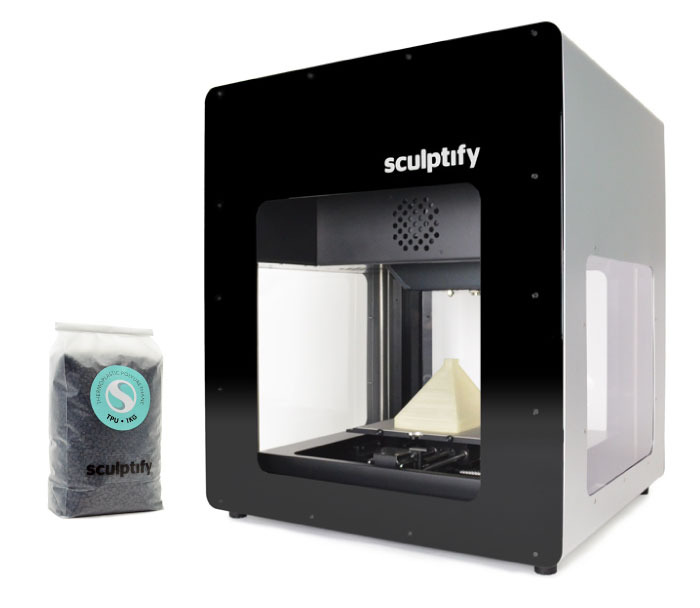
A couple of months ago we wrote of Sculptify’s new plastic pellet-fueled personal 3D printer, the “David”. Now that it’s launched, we checked to see how well it’s doing.
The product is very different from most personal 3D printers, which traditionally depend on precision-formed plastic filament as building material. The David relies on a supply of raw plastic pellets, which are fantastically less expensive than filament. The reason for this is that precision-made filament requires the operation of carefully calibrated extrusion equipment, which converts the very same raw pellets into filament. Using pellets directly simply skips that entire step in the process, saving time and money.
From what we can tell, the David works. It can provide a big advantage in material costs and also color flexibility, too. With all these good things, you’d think their launch campaign would be proceeding very well.
But a check recently showed their fundraising goal of USD$100,000 may not be met by the end of the campaign. As of this writing they’re over USD$60,000 with a couple of weeks to go. Typically the bulk of purchases are made at the beginning of such campaigns, so meeting their goal could be challenging. We count around twenty units have been purchased thus far.
The issue could be pricing, where the David lists on their Kickstarter page for between USD$2,745 and USD$3,345, depending on model and shipping location.
Does this mean the 3D printing audience is not interested in pellet-printing? We still think they are, but perhaps not at that price. Remember, the key feature of pellet printing is cheap materials. But that advantage may be negated by a high price for the printer itself.
Nevertheless, there’s still plenty of time to score one of these unique 3D printers.
Via Kickstarter and Sculptify

